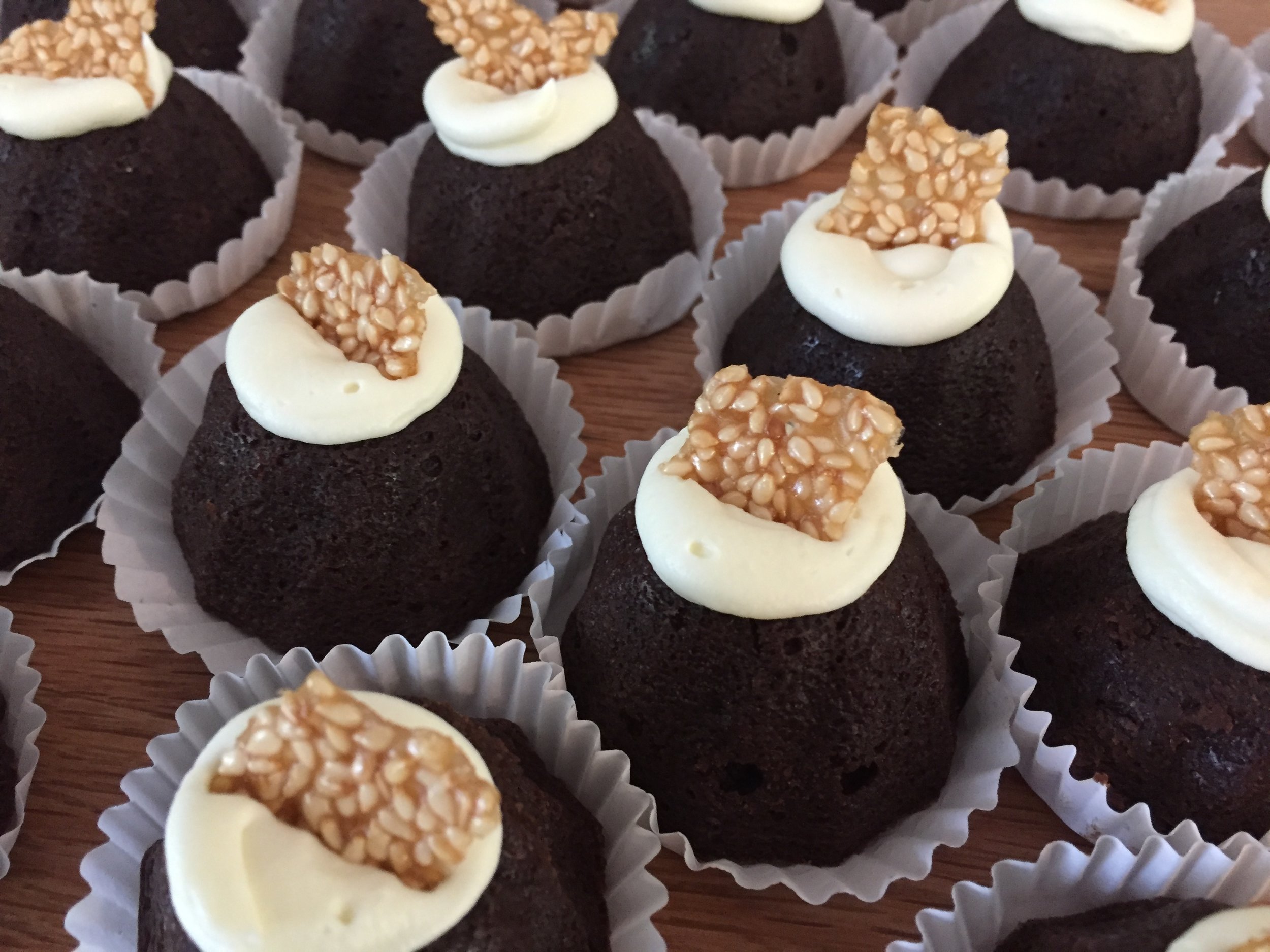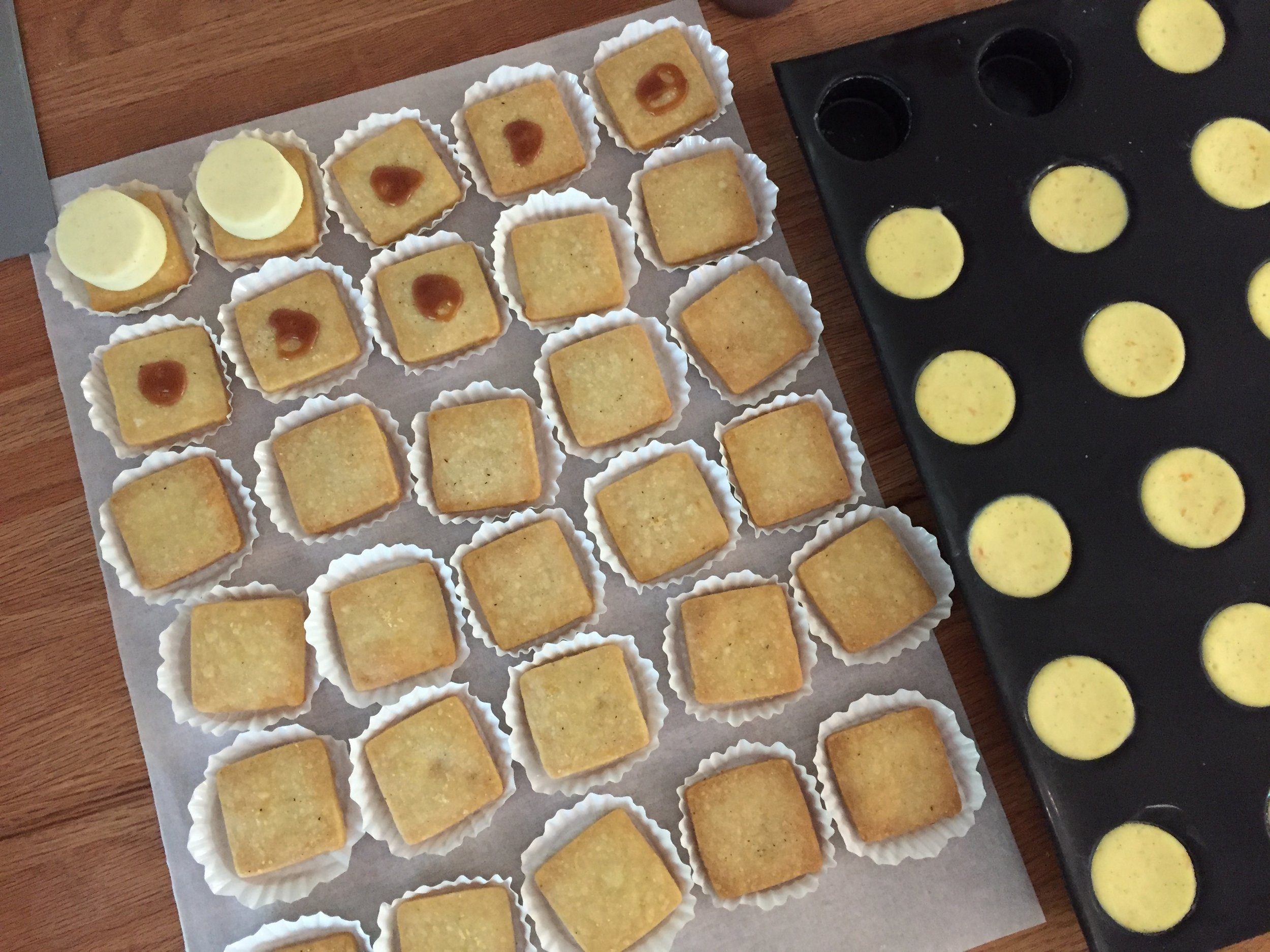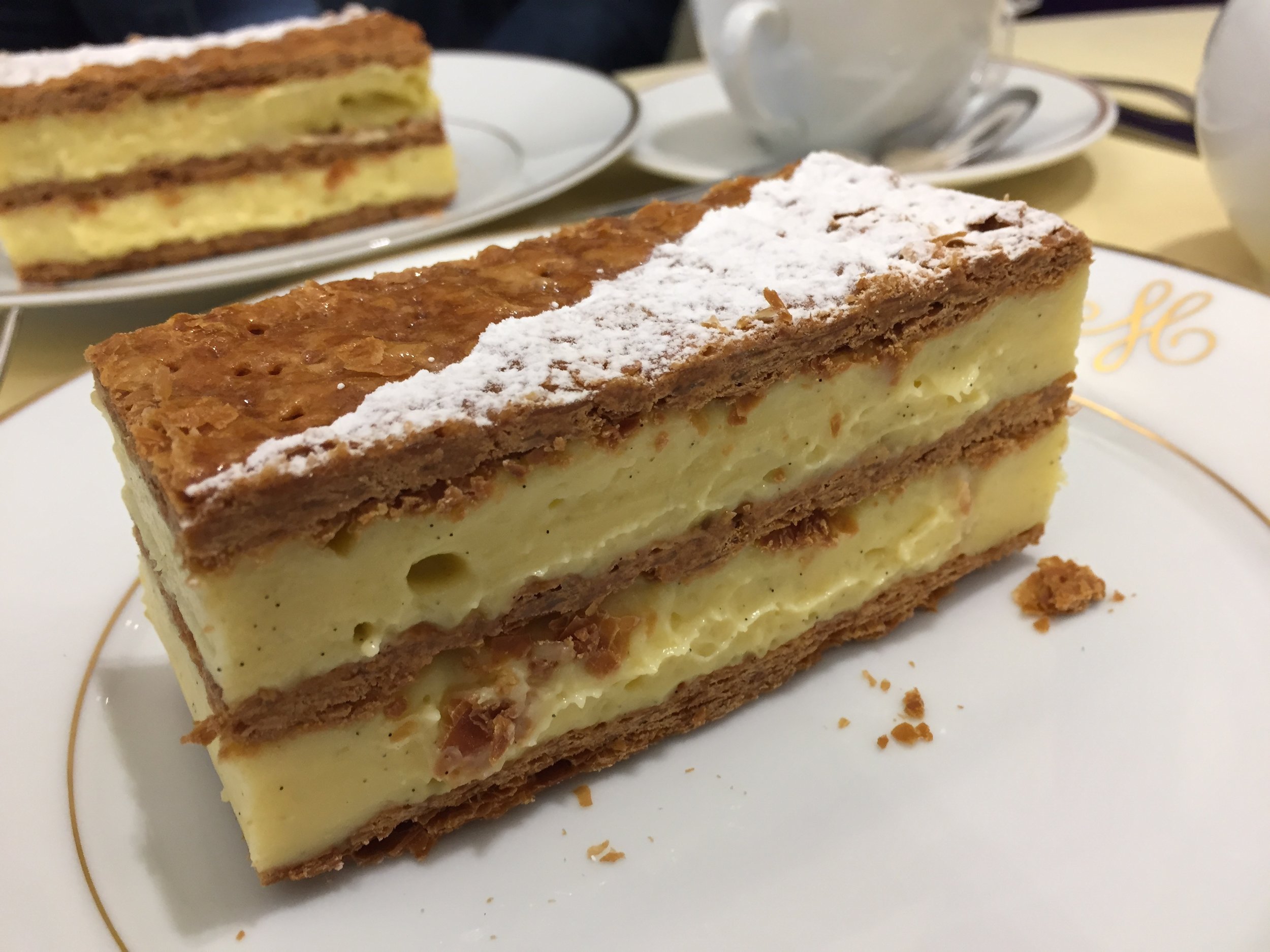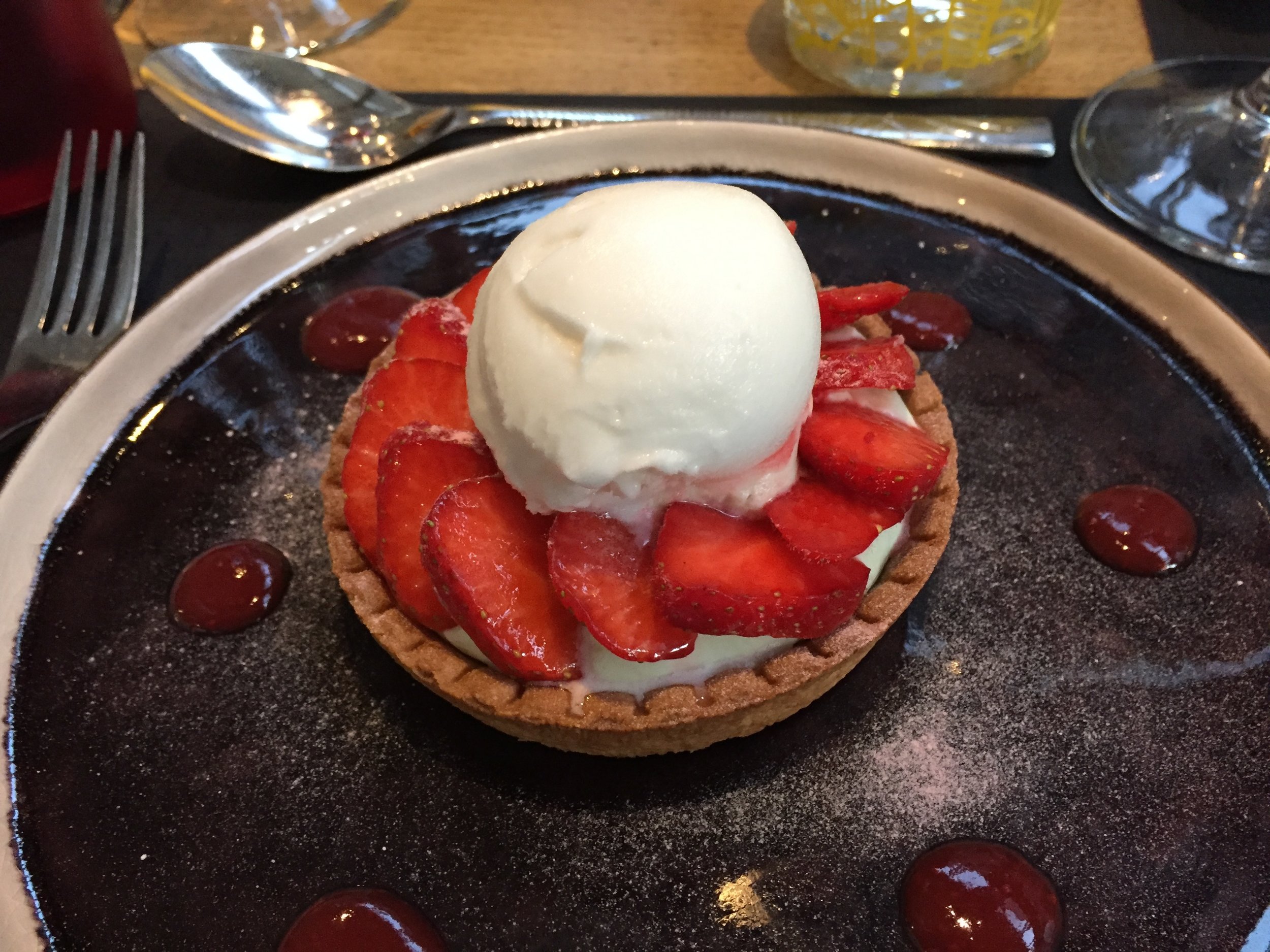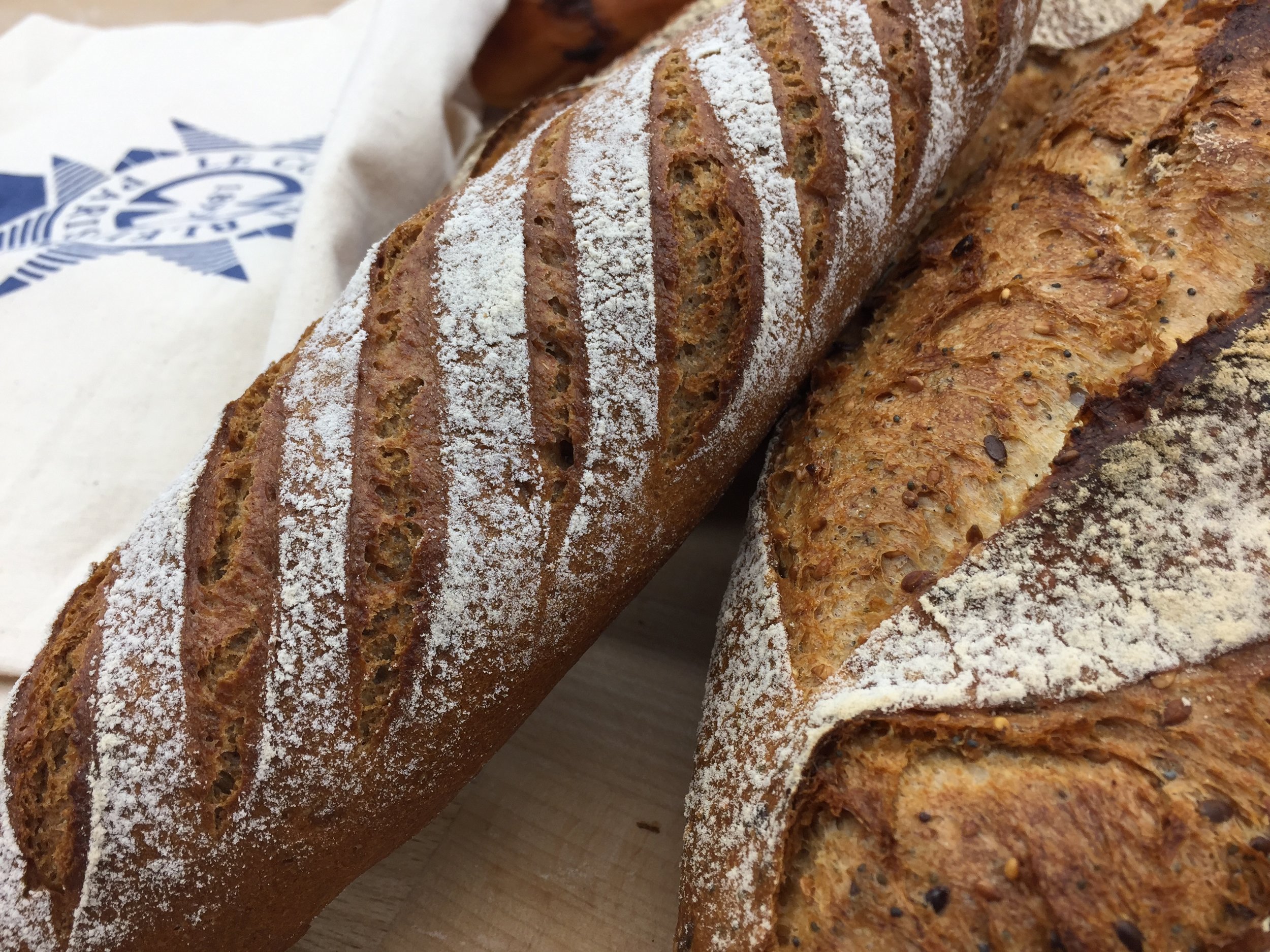Fun with afternoon tea
/Having returned from our France/Netherlands trip about a week and a half ago, we're slowly getting back into the swing of things here in Grand Rapids, MI. It took awhile for our colds to finally say adieu, and I must say it's a wonderful feeling to have some energy back in one's step.
Before we left on our voyage, I was already planning the goodies for another afternoon tea event at Heron Woods/Heron Manor , an independent/assisted living facility just down the street from our home.
Kim, the activities director, is a powerhouse of ideas for fun events and gatherings for the residents there. This time the tea was to follow an interesting presentation on how women dressed in Victorian times. Kim and her volunteer assistant, Dave, had the tables set just so with nosegays of pink roses, a beautiful assortment of teacups provided by one of the residents, as well as napkins folded to resemble roses.
Kim set out 26 (one for each letter of the alphabet) different decorated and hand written cards, one at each place, that included an interesting tidbit about or having something to do with tea. My favorite was a quote from Eleanor Roosevelt -"women are like tea bags - they don't know their strength until they get into hot water". Hmmmm.
The menu consisted of two savories and three sweets. I had a pretty clear idea in my head of how I wanted to execute the prep. It's great to have plenty of time to plan/prep/bake/garnish for an event like this, and, fortunately, my days were wide open leading up to the actual day.
Cheddar pecan financier
The financier process was très facile: make my usual financier base batter a couple of days ahead, fridge it until ready to use, then fold in grated sharp cheddar cheese and chopped toasted pecans just before baking. I used my favorite square savarin flexi-molds and, after baking, filled the top well with a bit of grated cheese, a dollop of apricot jam and a shard of toasted pecan to give it that je ne sais quoi. Yum.
Cucumber crème fraiche éclairs
The éclairs were a blast to make. I used my favorite pâte à choux base, added in a bit of salt and pepper and a skosh of ground mustard, piped 'em out, topped 'em with a grated aged cheddar-like Dutch cheese we found at Kingma's market here in GR and baked these little cuties. So satisfying. And the beauty is they can be baked several days ahead, frozen, then crisped back up for about 10 minutes in a 325ºF oven before cooling and filling. How great is that!
Below you can see the assembly process. It's all about being organized. For these I made my own crème fraiche (1 cup heavy cream plus 2 tablespoons buttermilk, let sit at room temp for 8-24 hours until thickened, stir and refrigerate), added a bit of salt and pepper plus lemon zest/juice and finely chopped chives. It didn't thicken as much as I expected, BUT I whipped it up and it was fantastic. Pipe-able and easy to fill les petits choux.
I sandwiched them with the crème fraiche, a cucumber slice and julienned carrots and topped 'em off with a spurt of crème and a sliver of chive.
Now for the sweets. First up - a new chocolate cake recipe that I brought home from Paris. Our friend Val gave it to me and attributes it to Hélène Darroze, the Michelin starred French chef with restaurants in Paris, London and Moscow. It's a definite keeper.
Here it is in a nutshell: melt 250 g chopped bittersweet chocolate (I like 62-64%) with 250 g unsalted butter; whisk in 250 g cane sugar and 70 g sifted all purpose flour; add 4 large eggs beaten en omelette. The recipe calls for a buttered and floured 9" cake pan, but, as is my wont, I love to bake cakes in petite flexi-molds. And, wouldn't you know it? I purchased a couple of mini-kouglof Silikomart flexis at Mora in Paris and was so ready to give them a spin. Perfect is the word. These baked about 18-20 minutes at 325ºF convection - just until looking dry and a bit cracked on the top. So fudge-y and delicious.
And guess what?! They can be baked ahead and frozen. Just pull them the night before you need them and let them thaw in the fridge over night. Now you're ready to garnish.
I posted recently about another petite chocolate cake with whipped white chocolate ganache and sesame crunch - I added the same garnish to these babies. Go with a good thing I always say.
Next up - strawberry mascarpone tartelette - pâte sucrée crust, whipped/lime zested mascarpone cream topped with fresh strawberries tossed in a bit of raspberry jam and, for the piéce de resistance, a sprinkling of pomegranate seeds for crunch and a bit of tang.
And here we go again - the shells can be blind baked and frozen several days ahead. Thaw overnight in the fridge and fill when ready. Love that planning and prepping!
And last but not least - orange vanilla ricotta custards on an orange cornmeal shortbread base.
The shortbread can be baked several days ahead and kept in a sealed container in the fridge or freezer. The custards can be baked in your favorite flexi-mold shape, cooled and then frozen until you're ready to pop them out of the molds and settle them onto the shortbread base. Add a dollop of caramel or jam on the cookie to hold the custard in place.
If you do the assembly just a couple of hours ahead of serving, they'll hold and thaw very nicely in the fridge and are the perfect creamy texture when it comes time to eat. Yeah, works for me!
I topped them with a small dollop of orange marmalade for just a bit of color.
Everyone enjoyed the menu as well as the time to sit and chat with friends on a beautiful summer-like afternoon.
If you're interested in goodies for your own afternoon tea, don't hesitate to hop on over to the contact page and send me a note. We can put our heads together to create just the right assortment for you!
Since this post is more about planning/prepping/assembling and not specifically about individual recipes, in addition to some links I’ve included in the text above, you can find most recipes on my recipe page.
Now go out there, have a delicious Memorial Day weekend and offer up a hearty welcome to summer!!









